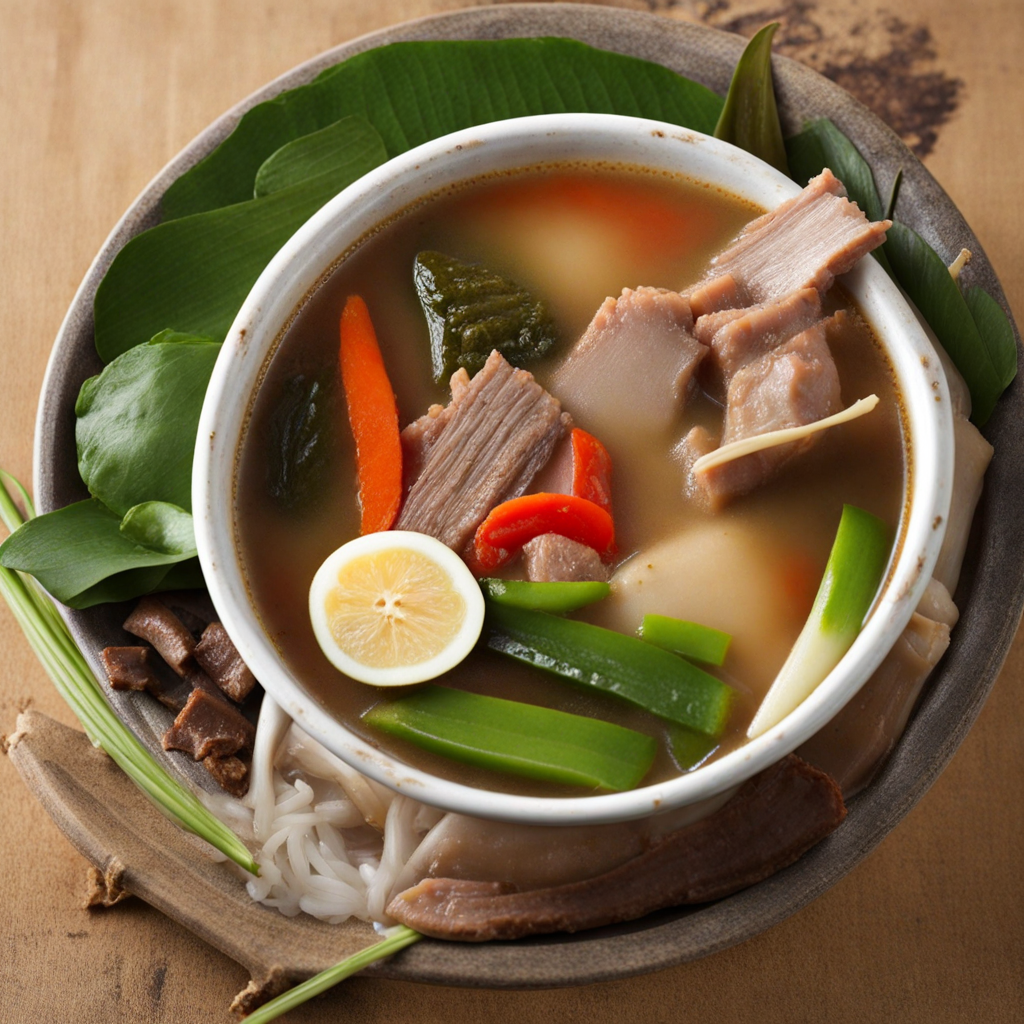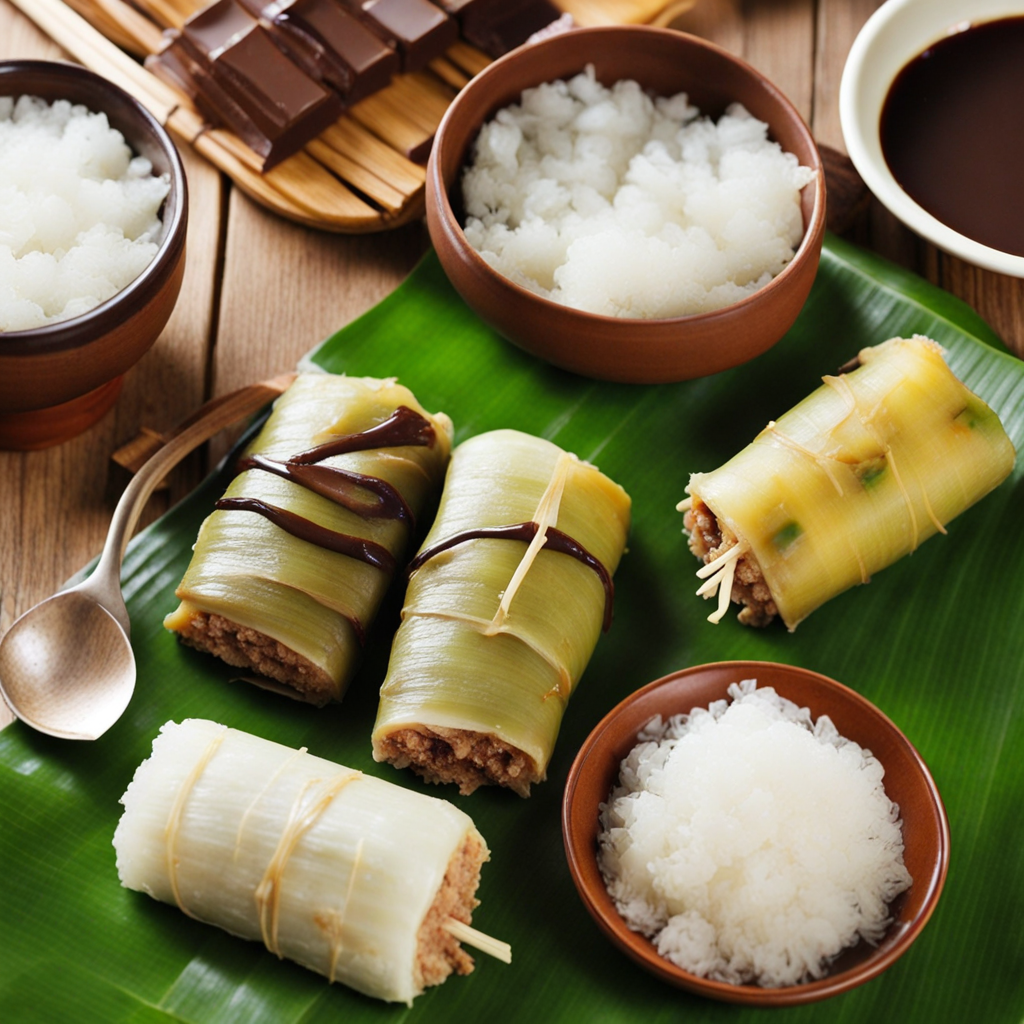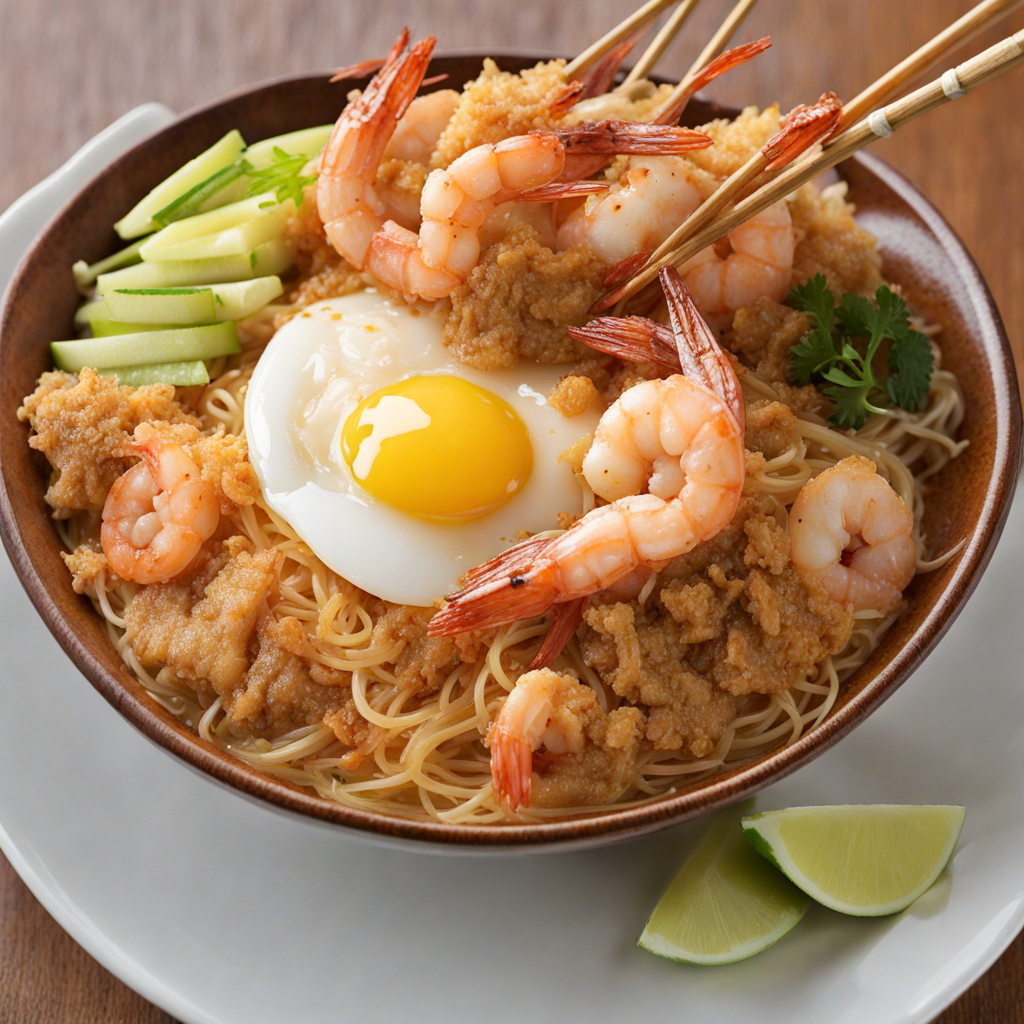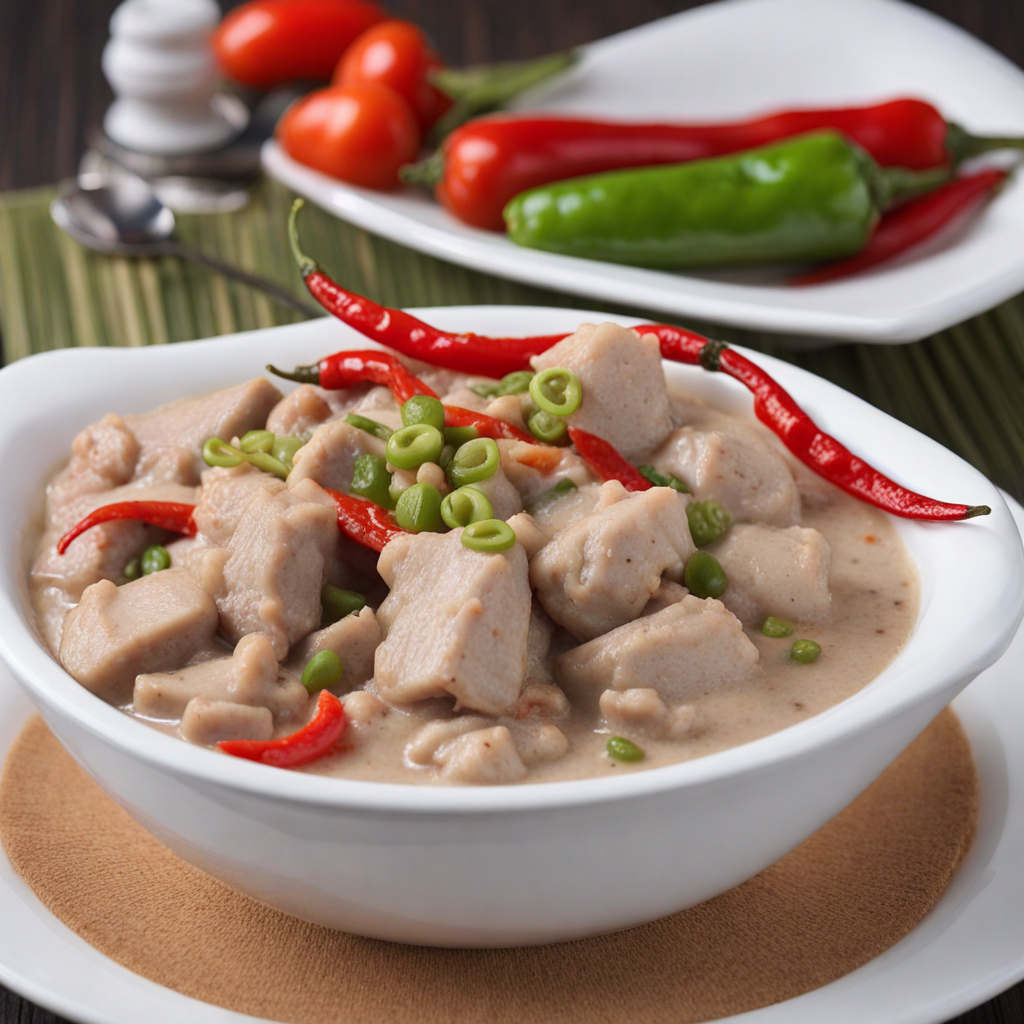Sinigang
Sinigang is a beloved Filipino dish known for its distinctively sour and savory flavor, often described as a comforting and hearty stew. The primary characteristic of Sinigang is its tangy broth, which is typically achieved through the use of tamarind, though other souring agents like green mango, calamansi, or bilimbi can also be used. This unique sourness is beautifully balanced with a medley of vegetables, such as radish (labanos), eggplant (talong), long green beans (sitaw), and water spinach (kangkong), making each spoonful vibrant and refreshing. The combination of flavors creates an inviting aroma that beckons diners to enjoy the rich culinary heritage of the Philippines. Meat is a crucial component of Sinigang, with options varying widely from pork, beef, shrimp, or fish, depending on regional variations and personal preferences. Pork belly is particularly popular, as its fat content infuses the broth with a luxurious richness. The meat is simmered until tender, allowing it to absorb the tangy goodness of the broth while contributing its own savory notes. The dish is usually garnished with fresh herbs, such as cilantro, enhancing the overall flavor profile and adding a pop of color to the presentation. Sinigang is often served with steamed rice, making it a complete and satisfying meal. The contrasting flavors of the sour broth and tender meat, combined with the freshness of the vegetables, create a symphony of tastes that is both comforting and invigorating. Enjoying Sinigang is not just about savoring food; it's an experience that evokes warmth and togetherness, capturing the essence of Filipino culture and hospitality.
How It Became This Dish
The Story of Sinigang: A Culinary Treasure of the Philippines Sinigang, a tangy and savory soup, is not merely a dish in the Philippines; it is a culinary emblem shaped by the country’s rich history, diverse cultures, and vibrant agricultural landscape. Known for its distinctive sour flavor, often derived from tamarind, Sinigang has evolved over centuries and remains a beloved staple in Filipino households. To understand Sinigang is to embark on a journey through the annals of Philippine history, exploring its origins, cultural significance, and the evolution of its recipe through time. #### Origins of Sinigang The roots of Sinigang can be traced back to the indigenous peoples of the Philippines, long before the arrival of Spanish colonizers in the 16th century. The term "sinigang" is derived from the Tagalog word "sinigang," which means "to stew" or "to be sour." The preparation of sour soups using local ingredients is a practice that has existed in various forms across many Southeast Asian nations, suggesting a shared culinary heritage. Tamarind, a key ingredient in Sinigang, is believed to have originated in Africa and made its way to Asia through trade routes. The arrival of tamarind in the Philippines coincided with the growing agricultural practices of the archipelago, where it found a hospitable environment for cultivation. Other souring agents used in Sinigang, such as calamansi, green mango, and bilimbi, further emphasize the adaptability of the dish to local ingredients and preferences. #### Cultural Significance Sinigang holds a special place in Filipino culture, resonating deeply with the Filipino value of family and community. Traditionally, it is served as a main dish during family meals, often accompanied by rice. The process of cooking Sinigang, with its aromatic broth bubbling away, serves as a communal activity where family members gather to share stories and laughter around the kitchen. The dish is also a reflection of the Filipino concept of "salu-salo," celebrating togetherness. Sinigang is often enjoyed during festive occasions and gatherings, symbolizing warmth and hospitality. In a country where culinary heritage is interwoven with social customs, the act of sharing a bowl of Sinigang signifies the bonds of kinship and the importance of nurturing relationships through food. Moreover, Sinigang has become emblematic of Filipino identity. As the Philippines navigated through colonization, globalization, and modernization, Sinigang remained a steadfast representation of the country's agricultural bounty and culinary diversity. In contemporary Filipino cuisine, it stands as a testament to the resilience of traditional dishes amidst changing times, encapsulating the spirit of a nation that takes pride in its heritage. #### Evolution Over Time The evolution of Sinigang is marked by regional variations and the influence of various cultures. While the classic Sinigang na Baboy (pork Sinigang) is perhaps the most recognized version, other proteins such as beef, shrimp, or fish have been embraced, showcasing the dish's versatility. Each region in the Philippines has its own unique twist on Sinigang, influenced by local ingredients and culinary traditions. For example, in the Ilocos Region, Sinigang na Baboy is often prepared with a more robust flavor profile, incorporating local vegetables like sitaw (string beans) and kangkong (water spinach) along with the traditional tamarind. Meanwhile, in the Visayas and Mindanao regions, Sinigang na Baboy can be made with a hint of coconut milk, adding a creaminess that contrasts with the dish's sourness. In metropolitan areas like Manila, Sinigang has also adapted to modern palates and cooking techniques. Chefs and home cooks alike experiment with innovative twists, such as the use of alternative souring agents like green apples or even the fusion of Sinigang with other culinary traditions. This blending of flavors embodies the evolving landscape of Filipino cuisine, where culinary identities are constantly being redefined. The rise of food tourism in the Philippines has further elevated the status of Sinigang on the global stage. As international travelers seek authentic culinary experiences, the dish has garnered attention for its unique flavor profile and cultural significance. Social media platforms have played a crucial role in amplifying this interest, with food bloggers and influencers sharing their own interpretations of Sinigang, thus broadening its appeal beyond traditional boundaries. #### Sinigang in Contemporary Cuisine In recent years, Sinigang has seen a renaissance, becoming a symbol of the "Filipino Food Movement," which aims to elevate traditional Filipino dishes in the global culinary arena. Chefs have taken to reinterpreting classic recipes, introducing modern techniques while preserving the essence of Sinigang. This has led to the emergence of gourmet Sinigang dishes served in fine dining restaurants, showcasing the dish's potential for sophistication without losing its cultural roots. Moreover, the pandemic brought about a renewed appreciation for home cooking, prompting families to rediscover traditional recipes like Sinigang. As people sought comfort in familiar flavors during uncertain times, Sinigang emerged as a source of nostalgia and solace. The act of cooking Sinigang became a means of connecting with one’s heritage, fostering a sense of continuity and tradition amidst the challenges of modern life. #### Conclusion Sinigang is not just a soup; it is a narrative woven into the fabric of Filipino culture, reflecting the country's history, agricultural diversity, and communal values. From its indigenous origins to its contemporary interpretations, Sinigang has transcended generations, adapting to the ever-changing landscape of Filipino society while remaining a beloved comfort food. As a dish that embodies the spirit of family, community, and resilience, Sinigang will undoubtedly continue to thrive, holding a cherished place in the hearts and kitchens of Filipinos worldwide. Whether enjoyed as a simple home-cooked meal or elevated to gourmet status, Sinigang remains a culinary treasure that tells the story of the Philippines—one bowl at a time.
You may like
Discover local flavors from Philippines







